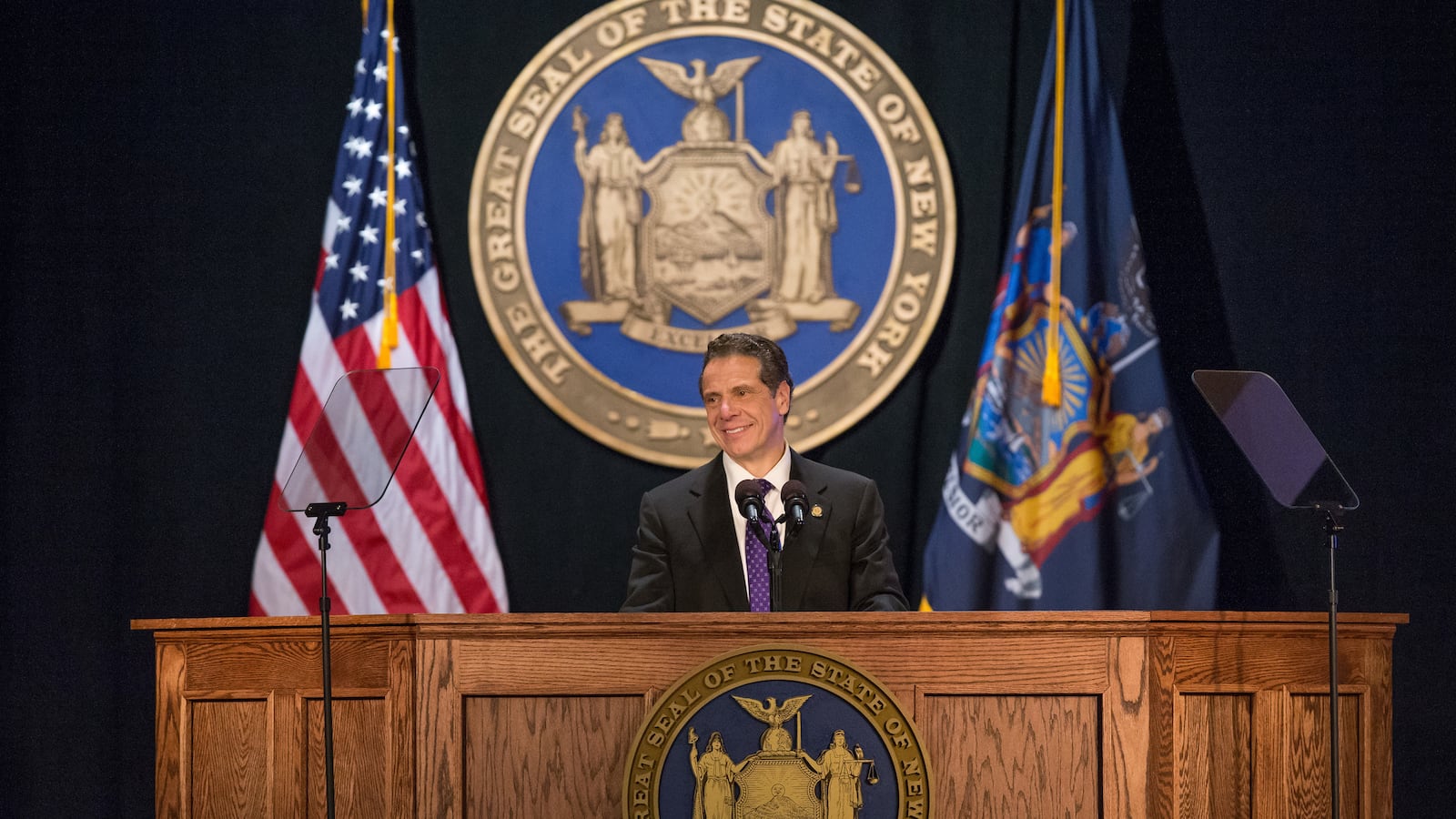Just three years ago, when Gov. Andrew Cuomo was locked in a ferocious policy battle with the powerful state teachers union, he mocked those whose only idea to improve schools is “more money, more money, more money.”
All that extra funding had ever achieved, he said then, was mediocre academic results, “a larger and larger bureaucracy and higher salaries.”
But now, as Cuomo prepares to seek a third term this fall and eyes a potential presidential bid in 2020, he’s changed his tune.
In his agenda-setting State of the State speech last week, he proposed a slate of uncontroversial, union-friendly education proposals — the continuation of a yearslong shift away from the controversial policies involving teacher evaluations, charter schools, and other issues that put him at odds with teachers unions in 2015.
Most significantly, he’s dropped the argument that New York gets too little in return for the amount it spends on schools, instead calling last week for the state to continue its “historic investment in public education.”
However, it remains to be seen whether his rhetoric will translate into a big boost in dollars. The state faces a budget crunch and looming federal spending cuts, which has Republican lawmakers calling for fiscal restraint. Meanwhile, advocates question how serious Cuomo is about sending more money to schools.
“So far, we have no reason to think the reality of his budget will meet the rhetoric,” said Billy Easton, executive director of the union-backed Alliance for Quality Education.
Despite his past wariness about unchecked education spending, Cuomo has actually expanded that part of the state’s budget over his two terms as governor.
Last year, he negotiated a $1.1 billion hike in state education aid, which he touted as the “largest investment in the history of the state.” Over the past seven years, he has boosted school spending by more than $6 billion to $25.8 billion last year — its highest level ever, a Cuomo spokeswoman pointed out.
However, advocates are still smarting from Cuomo’s (ultimately unsuccessful) attempt last year to make changes to a formula designed to funnel money to high-poverty school districts. Advocates said the changes would have allowed the state to withhold funding that those districts are owed under a decade-old lawsuit, but officials disputed that claim and said the governor still planned to give high-needs schools their due.
In last week’s speech, Cuomo railed against “funding inequities” and called for increased aid to poor districts. However, last year’s battle over the funding formula has left advocates doubting Cuomo’s sincerity.
“So far with him, school aid has been an exercise in the ‘hunger games’,” Easton said. “If he’s just going to give a little more to the neediest districts but still leave them way underfunded, then he’s just playing games.”
State officials said any suggestion that the governor has underfunded schools is “patently false.”
If school-funding advocates remain leery of Cuomo, the teachers unions — once the governor’s fiercest enemies — have mostly made peace with them as they rally around a common enemy: President Trump and his allies in Congress.
“We’ve had differences in the past. We’ve had fights with him,” said Michael Mulgrew, president of New York City’s teachers union. But they are now united in their opposition to President Trump’s agenda, which he called “an existential threat to our core principles.”
“We’re working together,” said Andy Pallotta, president of the state teachers union, in a separate interview. He said the union is “thrilled” with Cuomo’s move in their direction.
Cuomo and the state legislature must still hash out this year’s budget, the largest chunk of which traditionally goes to schools. So far, state Republicans, who control the senate, have sent mixed messages on spending.
Carl Marcellino, who chairs the senate education committee, told Politico New York: “For the most part, education will continue to grow.” But Senate Majority Leader John Flanagan has urged caution about increasing spending. On Tuesday, he proposed a series of tax cuts, which could restrict revenue to the state.
Whatever the outcome of this year’s budget negotiations, some observers remain skeptical that Cuomo is truly committed to a labor-backed education agenda centered on increased spending.
“I’m not sure that he’s more progressive — I think he’s simply highlighting a more progressive agenda,” said David Bloomfield, a professor of education, law, and public policy at Brooklyn College and the CUNY Graduate Center. “To my mind, he’s the same old Cuomo.”

